Types Of Countertop Overlays (Best Materials & Pros and Cons)
New kitchen countertops are a dream come true for most homeowners. However, the high cost of countertops deters many from purchasing and upgrading them. Painting or resurfacing your existing surfaces is a low-cost option, but it comes at the expense of durability. Instead of replacing the kitchen countertops, why not cover them with another material? A small, niche industry makes granite, wood, and quartz types of countertop overlays that can cover your existing surface.
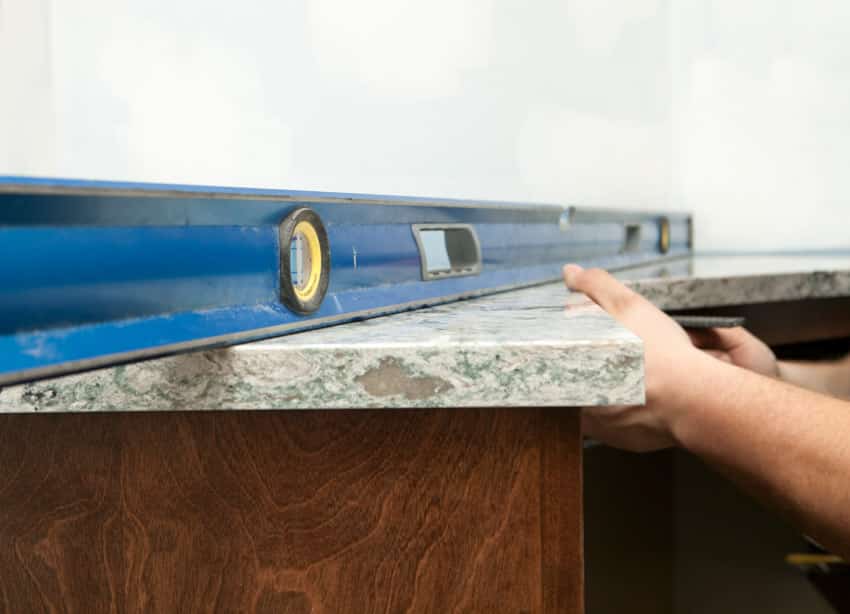
Countertop overlay is the term for this procedure. As the term implies, it covers the existing material, lowering labor costs and time spent removing your worn-down counters.
What Is A Countertop Overlay?
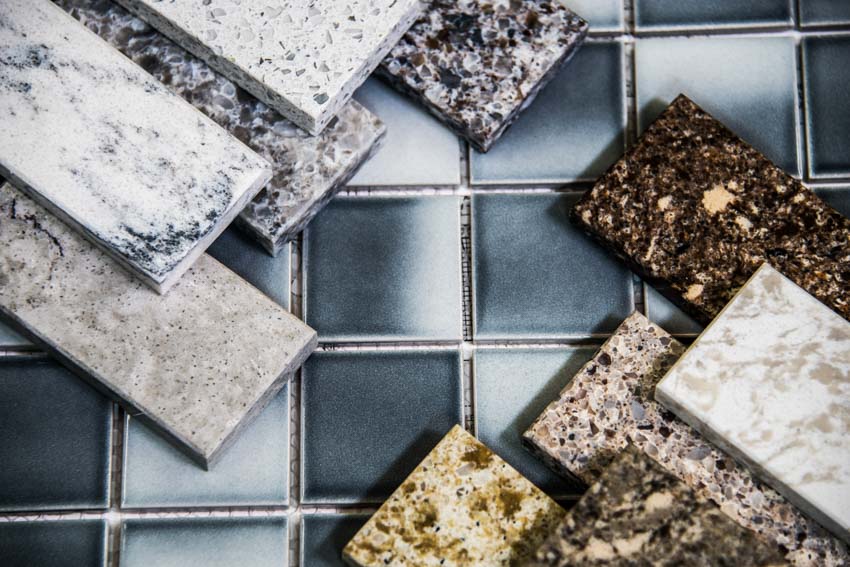
A countertop overlay results from a process in which concrete or another artificial material, such as granite, wood, or laminate, is applied or installed over existing countertop material to create a new layer of a smooth surface that covers the existing surface.
Concrete overlay can be tinted to match existing kitchen or bathroom hardware or cabinets, giving the space a unique look. You can also overlay a different material from your existing surface, whichever the material is, as long as it’s structurally stable.
Countertop overlays are made of the same material as regular counters but thinner.
One option for using overlay countertops is a type of coating. This can be accomplished using countertop treatments like Rustoleum’s Countertop Transformations, a multi-stage liquid covering, and thin, plastic adhesive sheets imprinted with a granite image. See this product on Amazon [sponsored link]
Overlay Installation
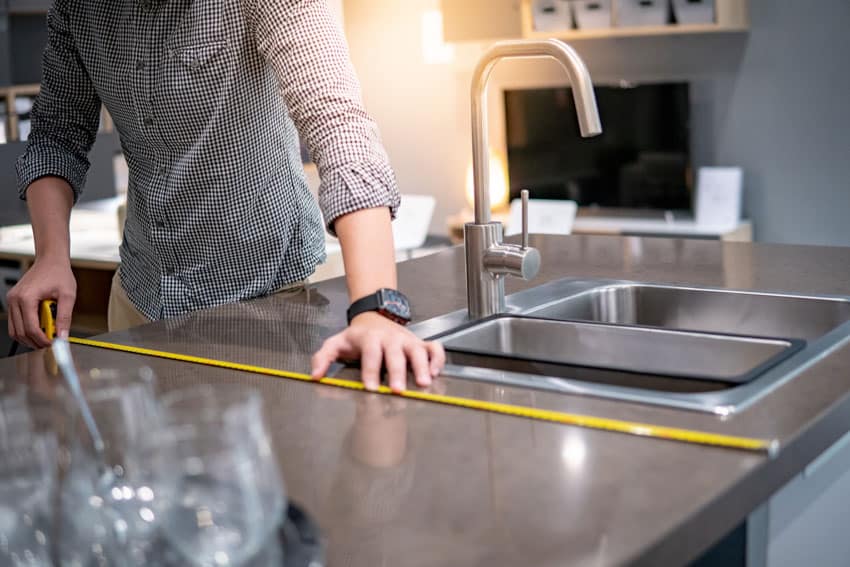
Another type of countertop overlay option is to install a hard cap over an existing surface. The cap will need to be custom-cut to fit each different countertop because many materials, such as granite or marble, are difficult to cut and may require special tools. In most cases, this necessitates hiring a professional to complete the installation.
To even out the surface, a resin epoxy is usually spread over the existing countertop before the cap is installed. The resin will harden and form a layer between the old countertop and the new cap when it dries. After that, the newly constructed overlay is glued or otherwise secured in place.
This method of renovating a kitchen or bathroom is usually less expensive than a complete replacement. Still, it’s important to have the countertops inspected to ensure that an overlay is the best option.
If the countertops are severely damaged, the damage should be repaired before the overlay is installed to avoid damage to the new surface. There are overlay projects that can take several days to complete, implying that the kitchen or bathroom will be unavailable during this time.
What Materials Are Counter Overlays Available In?
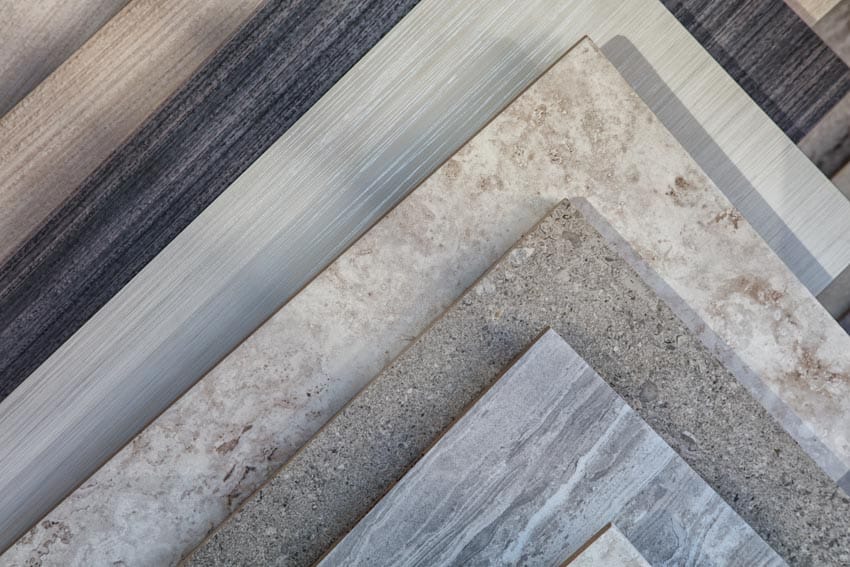
Many companies that sell worktop overlays refer to their products as granite or marble, but this refers to the appearance of the worktop rather than the actual material. You will have a large number of options from which to choose.
Overlays start out as ground stone leftover from slicing granite, quartzite, or marble from the mountain face during the quarrying process. The aggregate is mixed with resins, epoxy, colorants, and other materials before being pressed into 8mm thick slabs.
After that, they’re baked to create a super-hard surface that can be polished and cut into worktops. Natural stone aggregate can make up to 93 percent of some overlays.
Worktop overlays that resemble natural granite with veining, flecks, and movement in a non-repeating pattern are available. Overlays made of recycled glass are also available to add a splash of color to the different types of kitchen countertops.
Granite Overlay Countertops
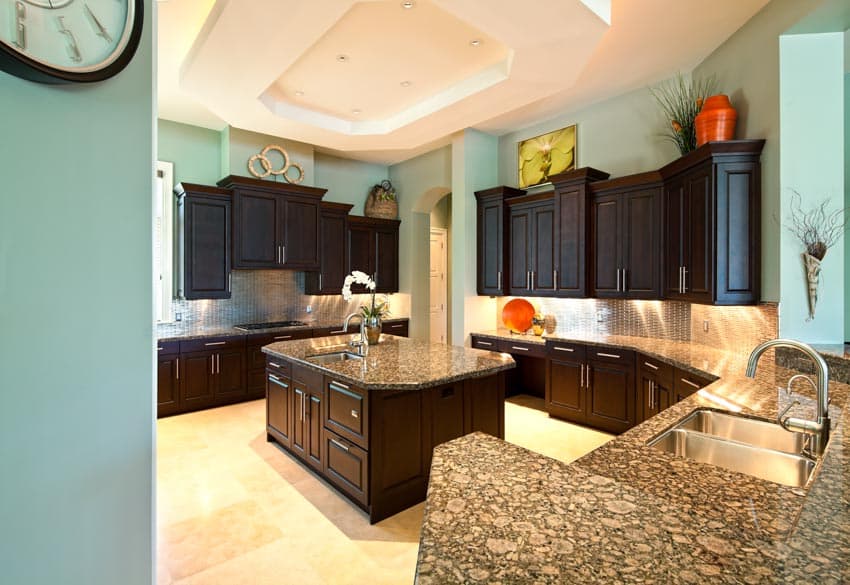
This method of kitchen or bathroom renovation is usually less expensive than a complete replacement, but it’s essential to have the countertops inspected to make sure an overlay is the best option.
To avoid damage to the new surface, if the countertops are severely damaged, the damage should be repaired before the countertop overlay is installed. Some overlay projects take several days to complete, which means the kitchen or bathroom will be unavailable during that time.
You’ll need a stable and sturdy counter that can handle the overlay for this to work. You’ll also need this base to be level and devoid of any variations. This is due to the fact that the overlay is usually thin, and any variation will have an impact on it.
Alternatively, the existing granite countertops can be removed. After that, you can lay down some plywood as a foundation. After that, you can apply the overlay.
You usually get certain features with a granite countertop overlay.
These characteristics include:
• A thickness of about 13 millimeters for the overlay
• A surface material that resists mildew and mold
• It has an apron or a front overhang.
• You can choose from a variety of edges, including eased, rounded, straight, and beveled.
Quartz Overlay Countertops
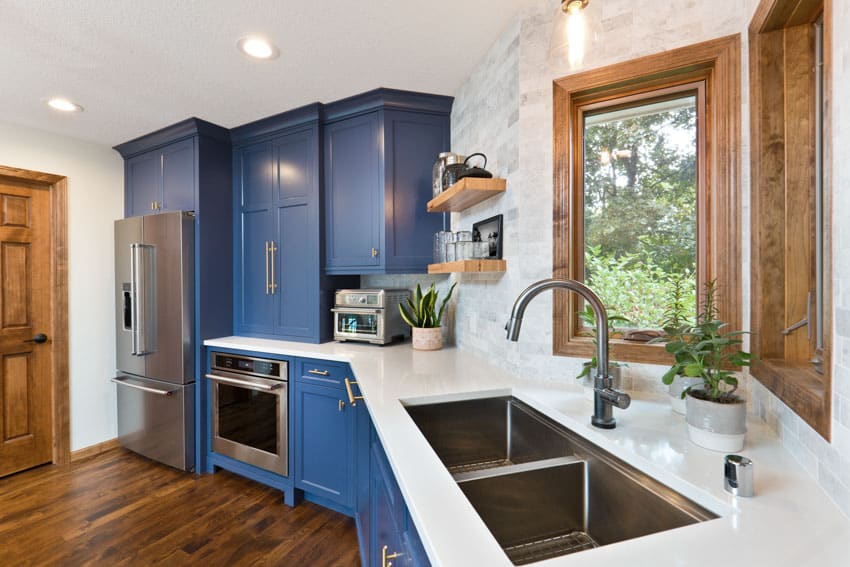
A quartz veneer is constructed by bonding a layer of composite quartz stone over a different substrate material that can then be fitted directly on top of your old counter.
Quartz is one of the most durable materials for your countertop overlay because it’s one of the hardest minerals. The beauty of quartz overlays is that they can imitate the appearance of quartzite, marble or granite. Compared to other natural materials, it requires little maintenance and does not require resealing.
Even though quartz is durable, care should still be taken after installation. Its surfaces are not resistant to heat, so care must be taken with hot pots and pans. In addition, you will never want to chop directly on the top to avoid potentially scratching it.
Concrete Overlays

A concrete overlay is a strong, easy-to-apply concrete layer that can be used to “layover” existing laminate, Formica, wood, or tile countertops. The overlay provides a long-lasting concrete appearance and feels for a fraction of the cost of freshly poured concrete slabs.
This resurfacing process can cover an existing surface with a colored, cement-based substance. It spruces up floors while also concealing minor damage and discoloration.
The thickness of the overlay is determined by the depth of the imprint and the amount of texture desired by the homeowner.
A concrete overlay can be customized with Concrete Dye, Stain, and Pigment to achieve rich color and texture for a fraction of the price of freshly poured concrete. Countertop overlay installation is a difficult task that professionals should leave, though do-it-yourselfers with enough time and knowledge can do it themselves. Other concrete alternatives may be easier to work with.
The most important aspect of the installation is ensuring that the concrete lays flat, which means you’ll most likely need several coats of concrete, especially if you’re working with tile countertops where the grout used is lower than the tiles themselves.
Laminate Overlays
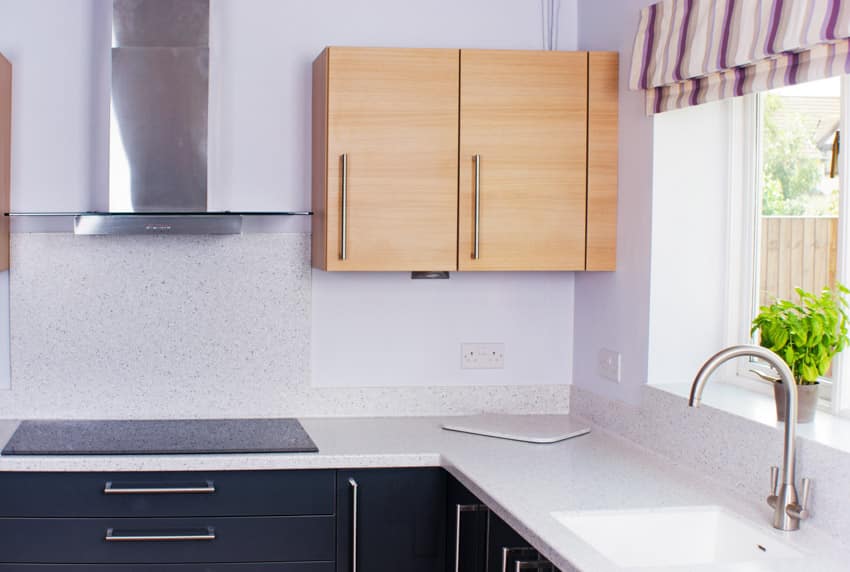
Laminate countertops are a cost-effective option, but the color fades over time, and the pattern/style becomes outdated. If your countertops are still in good shape, gluing down a new sheet of laminate is a great alternative to removing and replacing them. This is also a great option if you have a counter with custom dimensions and a two-week lead time on a replacement.
Laminate overlays are made from high-density fiberboard and have a printed image on the surface. Since these are constructed with fiberboard, they are not as durable in wet conditions.
A good substitute for using laminate is to use linoleum, which uses a vinyl material with a backing usually made of paper. Linoleum is often used for wet areas and flooring since its material is more water resistant.
You can also use other materials to overlay your laminate kitchen countertops, such as concrete or metal like stainless steel to create a more durable kitchen counter surface.
Wood Overlay Counters
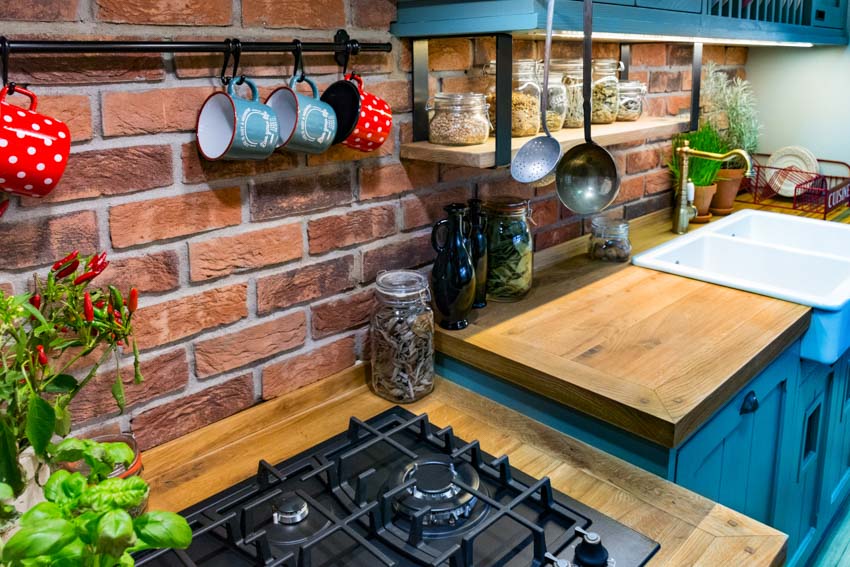
A wood overlay is typically constructed by adhering a thin piece of wood veneer to an inner core of MDF or particleboard, giving the appearance of a natural slab or lumber. There are various wood grains, colors, and stains to replicate the look you want at a fraction of the cost.
And just like solid wood, they can be sanded and refinished when worn or damaged. However, like the real thing, they are also susceptible to scratches and everyday wear and tear, so care must be taken to prolong their life. Sealing the product, similar to solid wood, is required.
Any concrete, laminate, or veneer wood can be used to resurface your wood overlay. Before choosing a material to cover your wooden countertops, make sure you have a solid foundation.
Overlay Cost
Granite: A granite countertop overlay can cost anywhere from $40 to $60.
Refinishing your existing countertops with an integrally colored concrete overlay is estimated to cost $1.15 per square foot. The project’s total cost is determined by the pre-existing conditions as well as the design aggregate and finishes.
Concrete: Resurfacing 100 square feet of concrete costs $400 on average. Less expensive projects can cost as little as $300, while more expensive projects can cost up to $500.
The cost per square foot can range anywhere from $3 to $5. A driveway, patio, pool deck, floor, or the slab foundation in the basement could all be resurfaced.
Stamped concrete kitchen countertops cost $8 to $20 per square foot, while concrete with a decorative overlay costs $7 to $12 per square foot.
Pros and Cons of Overlays For Countertops
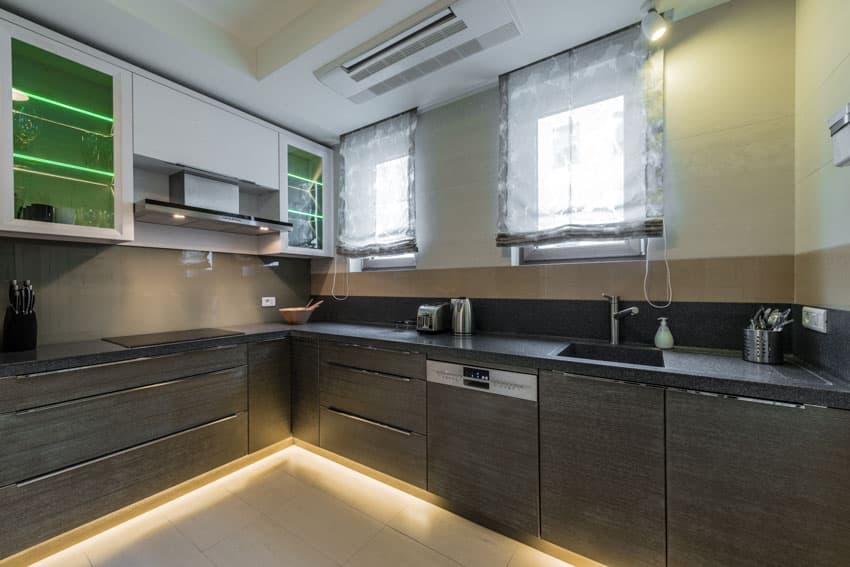
Here, we share the advantages and disadvantages of using countertop overlays.
Pros
• Countertop overlays are usually installed in a single day.
• Because overlays are thinner than full-sized countertops, they are less expensive.
• Allows you to have a similar look and feel to premium quartz without the high cost.
• Because you must pay for disposal, it is less expensive than sending your old counters to the landfill.
• Greener and more environmentally friendly than dumping old countertops in landfills.
Cons
• It’s possible that some seams will be visible.
• Kitchen overlays are as good as the counter base beneath them. The overlay cannot be installed if the base is weak.
• A small number of companies sell overlays.
• On uneven surfaces, it does not work well.
• There are far fewer colors and styles available than with full-size counter materials. This can make it harder to match correctly with kitchen backplash or other finishes.
• For starters, your options are more limited. While standard granite countertops come in a wide range of styles and colors, the overlay has fewer options.
Standard Countertops vs. Overlays
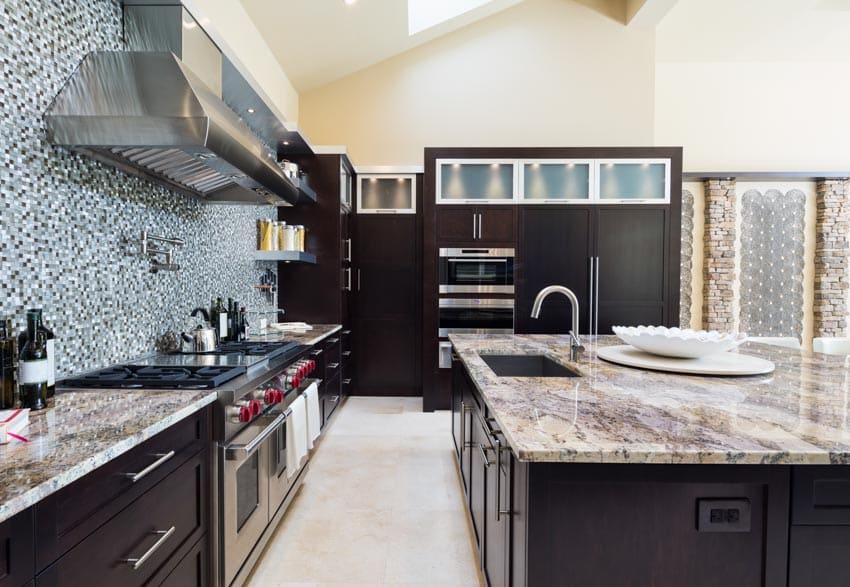
More homeowners want this time-saving and cost-effective approach thanks to new cement-based and epoxy overlays developed specifically for resurfacing countertops.
Similar to floor overlays, these products can be applied to almost any type of counter to create a long-lasting new decorative surface customized in color and finish.
They’re also a great alternative to new concrete countertops, as they allow you to achieve the same look while being lighter, more flexible, and less expensive. On the other hand, standard counter installation requires replacing the old one with a new one and a potentially lengthy kitchen remodel.
See more related content in our article about matching countertop and backsplash on this page.


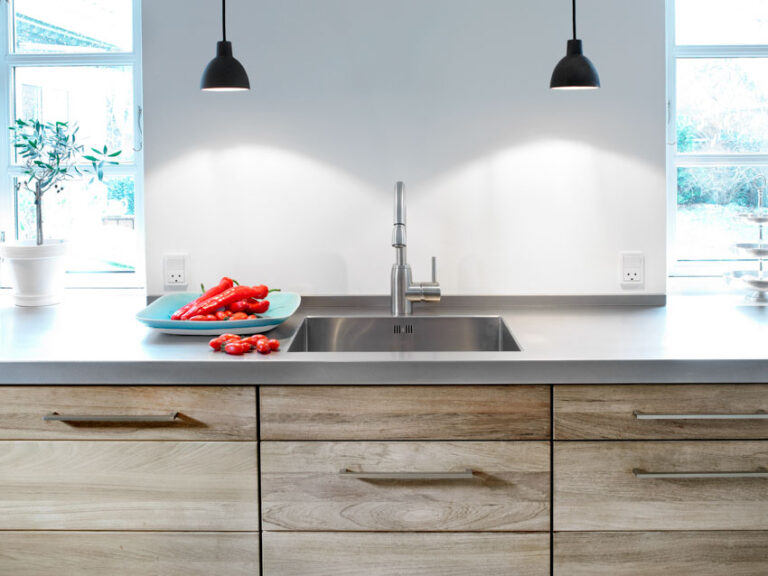
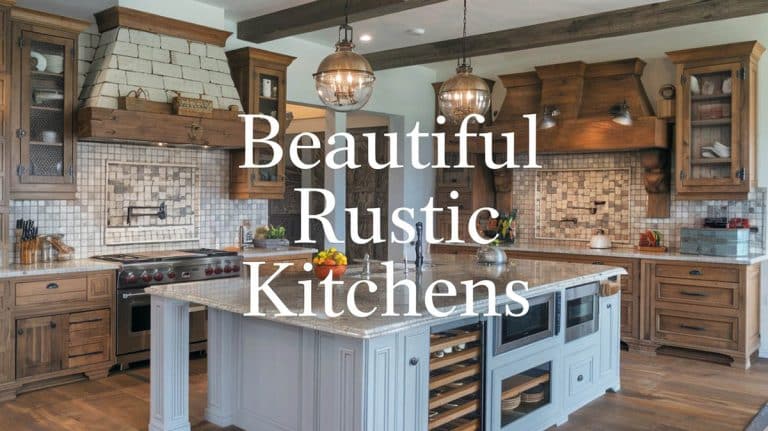
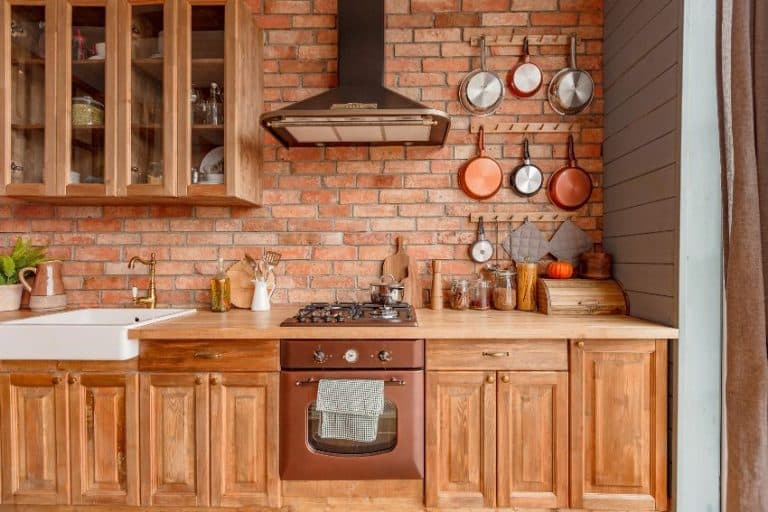
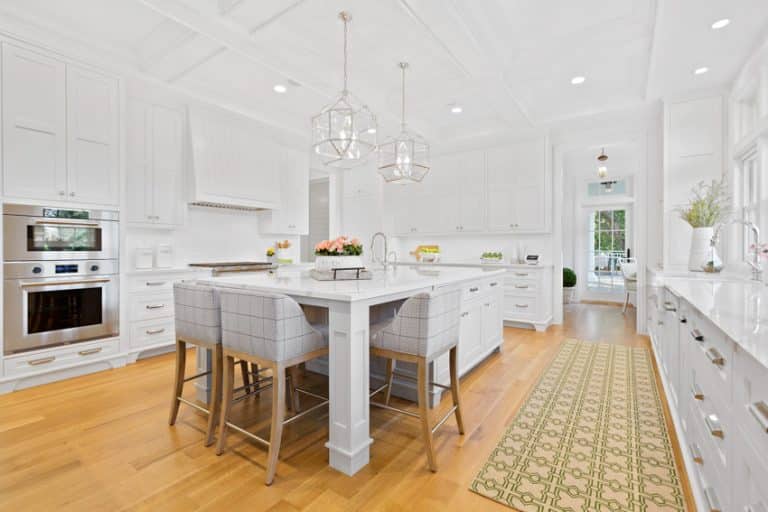

Hello, if doing an overlay over formica, how do you handle is the unfinished underside edge that typically overhangs the cabinets ? Thanks
Depending on the height of your countertops most contractors either leave this blank or install a thin piece of veneer there. As a homeowner, you could try painting it a flat black or matching it with a close shade of your countertop, or your wall color. Whatever you decide it’s a good idea to try a small test piece first to see if you like the look.
Would I also need to replace my old kitchen and bathroom sinks sink with a countertop overlay?
You should be able to keep your old sinks, but this will depend on the materials used and will be up to you and the contractor to decide if its worth it.